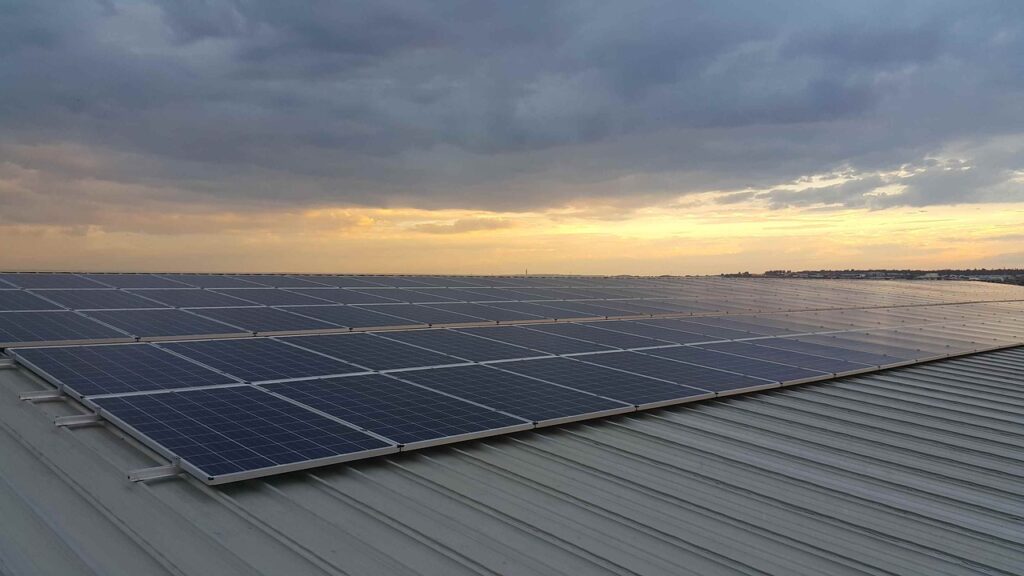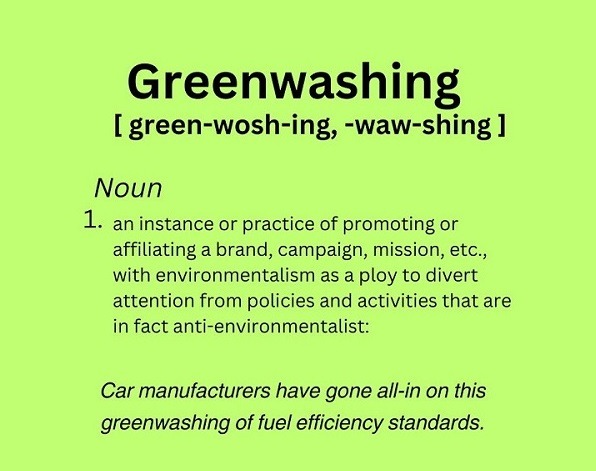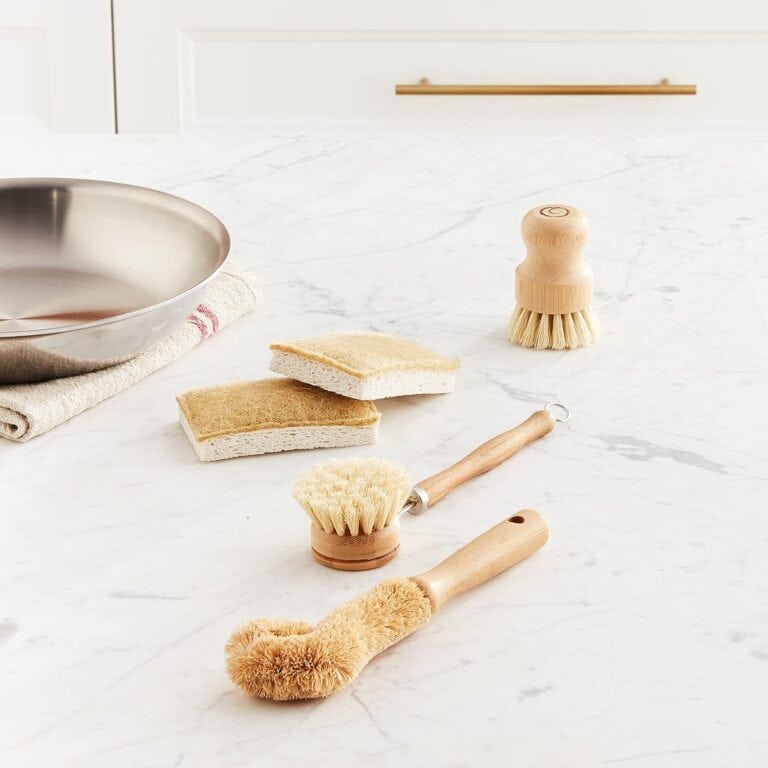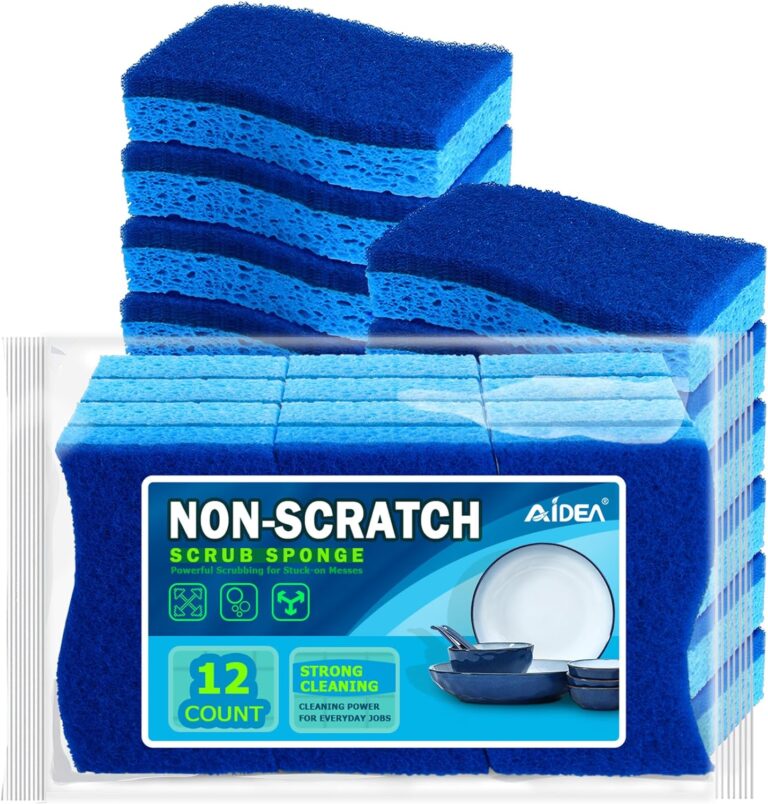5 Eco-friendly Home Hacks
Discover 5 eco-friendly home hacks to reduce your carbon footprint and save money. From energy-efficient appliances to solar power and sustainable materials, transform your home into an environmentally friendly oasis!
Are you looking to make your home more eco-friendly? Look no further! In this article, we will share five simple and effective eco-friendly home hacks that will not only help you reduce your carbon footprint but also save you money in the long run. From switching to zero-waste kitchen and bathroom products to composting leftovers, these hacks are perfect for anyone who wants to live a more sustainable lifestyle. So, get ready to transform your home into an environmentally friendly oasis with these easy tips and tricks!

Switch to Energy-Efficient Appliances
Energy efficiency is an important aspect of creating an eco-friendly home. By switching to energy-efficient appliances, you can reduce your carbon footprint and save money on your energy bills. One of the easiest ways to identify energy-efficient appliances is by looking for the Energy Star label. Energy Star-labeled appliances meet strict guidelines for energy efficiency set by the U.S. Environmental Protection Agency and the Department of Energy. These appliances are designed to consume less energy while still providing the same level of performance as their conventional counterparts. By upgrading to Energy Star-labeled refrigerators, dishwashers, washing machines, and other household appliances, you can make a significant impact on your energy consumption and help protect the environment.
Another great way to optimize energy use in your home is by investing in smart home technology. Smart home devices, such as thermostats, lighting systems, and power strips, allow you to control and monitor your energy usage remotely. With the help of these smart devices, you can easily adjust your home’s temperature, turn off lights and appliances remotely, and schedule energy-saving modes. For example, a programmable thermostat can learn your habits and adjust the temperature based on your preferences, saving energy when you’re away and keeping you comfortable when you’re home. By incorporating smart home technology into your daily routine, you can make your home more energy-efficient and reduce your environmental impact.
Speaking of power strips, they are another valuable tool in eliminating standby power consumption. Many electronic devices continue to consume energy even when they are turned off but still plugged in, a phenomenon known as standby power consumption or “vampire power.” By plugging your electronics into a power strip, you can easily turn off multiple devices and eliminate their standby power consumption with a single switch. This is particularly useful for devices that are not frequently used, such as computer peripherals or entertainment systems. By consciously reducing standby power consumption in your home, you can make a big difference in your overall energy usage and contribute to a more sustainable lifestyle.
Harness the Power of Solar Energy
Solar energy is a renewable and clean source of power that can be harnessed to reduce your reliance on traditional energy sources. Installing solar panels on your roof is one of the most effective ways to generate renewable energy for your home. These panels convert sunlight into electricity, which can be used to power your appliances, lighting, heating, and cooling systems. By utilizing solar energy, you can reduce your carbon footprint and potentially even sell excess energy back to the grid, earning credits on your electricity bill.
In addition to solar panels, you can also incorporate solar-powered outdoor lighting in your home. These lights are equipped with small solar panels that collect sunlight during the day to power the lights at night. By using solar-powered outdoor lighting, you can create a beautiful and eco-friendly landscape while reducing your energy consumption.
Another way to harness solar energy is by investing in solar-powered water heaters. These systems use the sun’s energy to heat your water, reducing the need for traditional water heaters that rely on gas or electricity. Solar water heaters are not only energy-efficient but can also save you money in the long run by reducing your water heating costs. By utilizing solar energy in various aspects of your home, you can make a significant impact on your energy consumption and contribute to a more sustainable future.
Implement Water-Saving Techniques
Conserving water is essential for both the environment and your water bill. Implementing water-saving techniques in your home can help you reduce water waste and promote a more sustainable lifestyle. One of the easiest ways to save water is by installing low-flow faucets and showerheads. These fixtures are designed to maintain the same water pressure while reducing the amount of water flow. By using low-flow fixtures, you can significantly decrease your water usage without sacrificing your comfort.
Another effective way to conserve water is by collecting rainwater for outdoor use. Installing a rain barrel or a rainwater harvesting system allows you to collect and store rainwater, which can be used for watering your plants, washing your car, or other outdoor activities. By utilizing rainwater, you can reduce your reliance on freshwater sources and conserve this precious resource.
It’s also important to check for any leaks in your plumbing system and fix them promptly. Even a small leak can waste a significant amount of water over time. Regularly inspect your faucets, toilets, and pipes for any signs of leaks, such as dripping water or moisture buildup. Addressing these leaks immediately can save both water and money in the long run, while also preventing potential water damage to your home.
By implementing water-saving techniques in your home, you can make a positive impact on the environment and reduce your water consumption, all while enjoying the benefits of a more sustainable lifestyle.
Create an Indoor Green Oasis
Indoor plants not only add a touch of beauty and tranquility to your home but also offer numerous benefits for your health and the environment. Houseplants are known for improving air quality by absorbing carbon dioxide and releasing oxygen through photosynthesis. They can also reduce airborne pollutants, such as formaldehyde and benzene, which are commonly found in indoor environments. By decorating your home with houseplants, you can create an indoor green oasis and enjoy cleaner and fresher air.
When it comes to cleaning your home, using natural and non-toxic cleaning products is a great way to minimize your environmental impact. Traditional cleaning products often contain harmful chemicals that can be detrimental to both your health and the environment. By opting for natural and non-toxic alternatives, such as vinegar, baking soda, and essential oils, you can clean your home effectively without introducing harmful substances into the air or waterways.
Growing your own herbs and vegetables indoors is not only a rewarding and fun activity but also a sustainable way to source your food. By growing your own produce, you can reduce your reliance on store-bought produce, which often travels long distances and contributes to greenhouse gas emissions. Indoor gardening allows you to have fresh, organic herbs and vegetables right at your fingertips, ensuring that your meals are both nutritious and eco-friendly.

Optimize Home Insulation
Proper insulation is key to maintaining a comfortable indoor temperature and reducing energy consumption. By optimizing home insulation, you can minimize heat transfer, prevent drafts, and improve energy efficiency. One of the first steps is to seal gaps and cracks with weatherstripping and caulk. These simple yet effective measures can help prevent air leaks around windows, doors, and other vulnerable areas in your home. By sealing these gaps, you can ensure that warm air stays inside during the winter and cool air stays inside during the summer, reducing the need for excess heating or cooling.
Another essential aspect of home insulation is insulating your attic and walls. Attics are notorious for letting heat escape during the winter and letting hot air accumulate during the summer. By insulating your attic, you can create a thermal barrier, preventing excessive heat transfer and reducing the workload on your heating and cooling systems. Similarly, insulating your walls can help maintain a comfortable indoor temperature throughout the year and minimize energy consumption.
Curtains or blinds can also play a significant role in optimizing home insulation. By utilizing these window coverings, you can regulate the amount of natural light and heat that enters your home. During the summer, thick and reflective curtains or blinds can help block out heat from the sun, keeping your home cooler and reducing the need for air conditioning. In the winter, opening curtains or blinds during the day can allow sunlight to naturally warm your home, reducing the need for heating. By strategically using curtains or blinds, you can optimize your home’s energy efficiency and create a more comfortable living environment.
Reduce Single-Use Plastics
Single-use plastics are a major contributor to environmental pollution and waste. By reducing the use of single-use plastics in your daily life, you can make a positive impact on the environment and help create a more sustainable future. One of the easiest ways to reduce single-use plastics is by switching to reusable alternatives for water bottles and shopping bags. Investing in a reusable water bottle and bringing your own bags when shopping can significantly reduce your plastic consumption and help reduce plastic waste in landfills and oceans.
In addition to water bottles and shopping bags, it’s important to avoid single-use plastic utensils and straws. Instead, opt for reusable utensils made from materials like stainless steel or bamboo. If you prefer using straws, consider purchasing a set of reusable straws made from stainless steel or silicone. By making these small switches in your daily habits, you can prevent unnecessary plastic waste and promote a more sustainable lifestyle.
Another area where single-use plastics are commonly used is in food storage. Instead of using plastic containers, consider using glass or stainless steel food storage containers. These alternatives are not only more durable and long-lasting but also free from harmful chemicals that can leach into your food. By investing in reusable food storage containers, you can not only reduce your plastic waste but also ensure the safety of your food.

Minimize Food Waste
Food waste is a significant issue that contributes to environmental degradation and squanders valuable resources. By minimizing food waste in your home, you can reduce your environmental impact and save money. One effective way to minimize food waste is by planning your meals in advance. By creating a weekly meal plan and sticking to a shopping list, you can avoid overbuying and ensure that all the ingredients you purchase are utilized efficiently. This not only reduces food waste but also simplifies your meal preparation and saves you time and money.
Proper food storage is another crucial aspect of minimizing food waste. By storing your food properly, you can prolong its freshness and prevent spoilage. Keep perishable items in the refrigerator, ensuring that they are stored at the appropriate temperature and humidity levels. Utilize storage containers or bags to protect leftovers and keep them fresh for longer. By implementing proper food storage practices, you can extend the shelf life of your food and reduce the amount of food waste generated.
Composting is an eco-friendly solution to food waste that allows you to turn your kitchen scraps and food leftovers into nutrient-rich soil. By composting food scraps, you can divert organic waste from landfills, reduce greenhouse gas emissions, and create a valuable resource for your garden. Set up a composting system in your backyard or consider using indoor composting bins or worm composting for smaller spaces. By composting your food scraps, you can contribute to a more circular and sustainable food system.
Choose Sustainable Materials
Choosing sustainable materials for your home can have a significant impact on the environment and promote a more eco-friendly lifestyle. When it comes to building or renovating your home, opt for eco-friendly building materials like bamboo and reclaimed wood. Bamboo is a fast-growing and renewable resource that can be used for flooring, furniture, and even structural elements. Reclaimed wood, on the other hand, is salvaged from old buildings or furniture and given a new life. By using these sustainable materials, you can reduce the demand for virgin timber and contribute to forest conservation efforts.
The choice of textiles for your furniture and bedding can also make a difference. Instead of synthetic materials, opt for organic and natural textiles like organic cotton, hemp, or linen. These materials are grown without the use of harmful pesticides or chemicals, making them better for both your health and the environment. By choosing sustainable textiles, you can support ethical and eco-friendly practices in the textile industry and enjoy a healthier living environment.
Flooring is another area where you can make sustainable choices. Instead of traditional flooring materials like vinyl or carpet, consider installing flooring made from recycled materials. Recycled glass tiles, reclaimed wood flooring, or recycled rubber flooring are all excellent options that reduce the need for new resources and contribute to a more sustainable home.
Reduce Energy Consumption
Reducing energy consumption is crucial for creating an eco-friendly home and minimizing your carbon footprint. One of the simplest ways to reduce energy consumption is by switching to LED light bulbs. LED bulbs use significantly less energy and last much longer than traditional incandescent bulbs. By replacing your bulbs with LED alternatives, you can reduce your energy usage for lighting and save money on your electricity bills.
Another effective way to reduce energy consumption is by turning off lights and appliances when they are not in use. Encourage everyone in your household to develop the habit of switching off lights when leaving a room and powering off electronics when not needed. This simple practice can help you save energy and reduce unnecessary electricity consumption.
Utilizing natural light and daylighting strategies is another great way to reduce energy usage. Make use of the sunlight during the day by opening curtains or blinds to let natural light in. This can significantly reduce the need for artificial lighting and enhance the visual appeal of your living spaces. Additionally, consider incorporating daylighting strategies, such as skylights or light tubes, to bring more natural light into darker areas of your home. By maximizing natural light, you can minimize your reliance on artificial lighting and lower your energy consumption.
Embrace DIY Repairs and Upcycling
Embracing the do-it-yourself (DIY) spirit and adopting upcycling practices can significantly contribute to a more sustainable lifestyle. Instead of immediately replacing broken items, learn basic repair skills to fix them yourself. Repairing appliances, furniture, or other household items can extend their lifespan and reduce the amount of waste generated. There are many online tutorials, workshops, and community resources available to help you learn these skills and become more self-sufficient.
Upcycling is another creative way to give new life to old or unwanted items. Instead of throwing away furniture or household items, consider transforming them into something new and unique. For example, you can repurpose an old wooden ladder into a bookshelf, or turn an empty wine bottle into a decorative vase. Upcycling not only reduces waste but also allows you to express your creativity and personalize your living space. If you don’t have the time or inclination to upcycle items yourself, consider donating or selling them to someone who can give them a second life. By embracing DIY repairs and upcycling, you can reduce waste, save money, and contribute to a more sustainable society.
In conclusion, creating an eco-friendly home is not only beneficial for the environment but also for your health and finances. By implementing the tips and techniques outlined in this article, you can reduce your carbon footprint, save energy, conserve water, minimize waste, and make a positive impact on the planet. It’s important to remember that even small changes and everyday choices can add up to significant environmental progress. So switch to energy-efficient appliances, harness the power of solar energy, implement water-saving techniques, create an indoor green oasis, optimize home insulation, reduce single-use plastics, minimize food waste, choose sustainable materials, reduce energy consumption, and embrace DIY repairs and upcycling. Together, we can create a greener and more sustainable future for generations to come.






